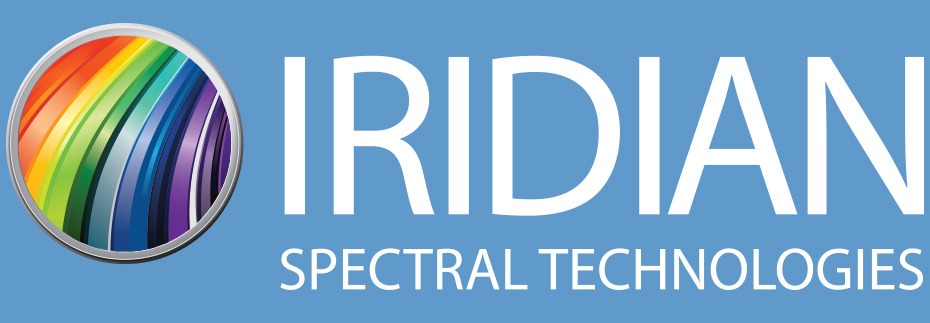An increasingly interconnected world with more devices online than ever before means the demand for low latency, high capacity, secure, and uninterrupted internet connectivity is still growing.1 As the world’s leading supplier of optical filter solutions, Iridian Spectral Technologies has a very important role to play in the satellite communications industry by supplying selective windows and transceiver filters to improve the signal-to-noise in satcom systems.
Satcom Networks
Commercial satellite communication networks typically utilize satellites positioned in different orbits around the Earth. These orbits include geostationary orbit, where the satellite remains at a considerable distance from the Earth and moves at a nearly identical rotational rate, appearing fixed in the sky. Alternatively, some satellites are placed in low Earth orbit (LEO), completing orbits around the Earth in relatively short periods, typically just under two hours. Medium earth orbit satellites are somewhat less common and orbit between geostationary and LEO satellites.
Commercial satellite communication networks leverage multiple satellites and optical inter-satellite links to enhance overall satellite coverage, especially for LEO equipment. The LEO mesh also plays a significant role in numerous Internet of Things (IoT) and asset-tracking applications. The closer orbit of the LEO satellite improves communication speeds, and the use of inter-satellite communication in the mesh overcomes the issue of poor communication coverage of a single device.2
Most inter-satellite connections are facilitated with optical inter-satellite link (OISL) architectures.3 These links employ laser-based communication techniques, utilizing infrared wavelengths instead of radio frequencies to enable higher information density for data transfer.
Optical inter-satellite links operate through a transmission beam and a receiver mechanism. By employing infrared wavelengths for information transmission, these links enable the transfer of gigabytes per second, a crucial requirement for various applications that rely on uninterrupted connectivity. To enhance performance, many optical inter-satellite links also incorporate auxiliary components like coarse positioning systems to ensure the beam will always be received and optics such as telescopes that allow for beam reshaping.
Optical Filters in Optical Inter-Satellite Links
As the laser beam contains all of the information to be transferred, it is very important in optical inter-satellite links that additional frequencies are not introduced, or any additional noise is present that would degrade the quality of the data being transmitted.
Many optical inter-satellite link systems make use of optical filters to help introduce wavelength selectivity. A similar approach is used for many optical fiber-based communications systems. In the optical inter-satellite link system, filters can help block frequencies outside of the desired range, remove contamination from background solar radiation, or allow for selective transmission over only certain bands.
A single optical filter cannot meet all the performance demands of an optical inter-satellite link system, and so a variety of filter types, from solar rejection windows to wavelength selective signal clean-up filters and beam splitting/combining dichroic filters, are required.
Solar Rejection Windows (SRWs)
Solar rejection windows (SRWs) in optical inter-satellite link systems allow for transmission of the signal band (typically 1550 nm) and block solar radiation which is mostly in the visible region of the electromagnetic spectrum. The reduced background helps lower solar heating in the satellite while improving the signal-to-noise of the optical inter-satellite link.
Crucial filter characteristics include effectively blocking the solar spectrum while ensuring high transmittance of the signal band. These filters typically have large physical diameters and must maintain a low transmitted wavefront error.
Dichroic Beam Splitters/Combiners
Dichroic beam splitters are used on the optical inter-satellite link receiver to selectively receive specific wavelength bands – this may be as a way of cleaning up the signal or for more complex multiplexing applications where different signals need to be directed to different detectors.
An ideal dichroic filter has very steep transmission curves, high transmission, and reflection and may also need to be capable of preserving polarization if encryption is being used.
Band-pass filters
Most optical inter-satellite links use band-pass filters to clean up signals and ensure high signal-to-noise through background or unwanted frequency suppression. These filters are customized with a well-matched passband bandwidth to suit the specific application. They tend to be rather narrow to ensure efficient signal processing for most optical inter-satellite links while still achieving high levels of transmission and reflectance. Sharp cut-on and cut-offs can also improve overall filter performance.
Iridian Spectral Technologies
Iridian Spectral Technologies is a global expert in optical filter design and production, with extensive experience working in space technology, and is part of the Canadian Controlled Goods Program. Iridian’s filters are engineered to endure demanding aerospace conditions through a series of rigorous tests. These tests encompass vibration testing, radiation exposure, thermal shock cycling, and thermal vacuum cycling ranging from 50 K to 450 K. Additionally, Iridian’s filters for optical inter-satellite links have successfully passed outgassing testing following ASTM-E595 standards and demonstrated high reliability in accordance with MIL-C-48497A.
With many future new applications being proposed for optical inter-satellite links, these technologies will only become more commonplace in the future.4 Contact Iridian today to find out more about its work and its role in the future of satcom networks.
References and Further Reading
- Douinot, A., Dalla Torre, A., Martin, J., Iffly, J. F., Rapin, L., Meisch, C., Bastian, C., & Pfister, L. (2019). Prototype of a LPWA Network for Real-Time Hydro-Meteorological Monitoring and Flood Nowcasting. In Ad-hoc, Mobile and Wireless Networks (Vol. 11803). https://doi.org/10.1007/978-3-030-31831-4_40
- Liu, S., Gao, Z., Wu, Y., Kwan Ng, D. W., Gao, X., Wong, K. K., Chatzinotas, S., & Ottersten, B. (2021). LEO Satellite Constellations for 5G and Beyond: How Will They Reshape Vertical Domains? IEEE Communications Magazine, 59(7), 30–36. https://doi.org/10.1109/MCOM.001.2001081
- Sodnik, Z., Lutz, H., Furch, B., & Meyer, R. (2010, February). Optical satellite communications in Europe. In Free-space laser communication technologies XXII (Vol. 7587, pp. 49-57). SPIE. https://doi.org/10.1117/12.847075
- Giorgi, G., Kroese, B., & Michalak, G. (2019, March). Future GNSS constellations with optical inter-satellite links. Preliminary space segment analyses. In 2019 IEEE Aerospace Conference (pp. 1-13). IEEE. http://DOI: 10.1109/AERO.2019.8742105
